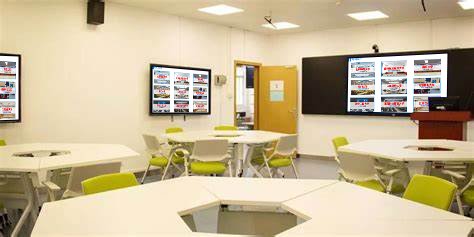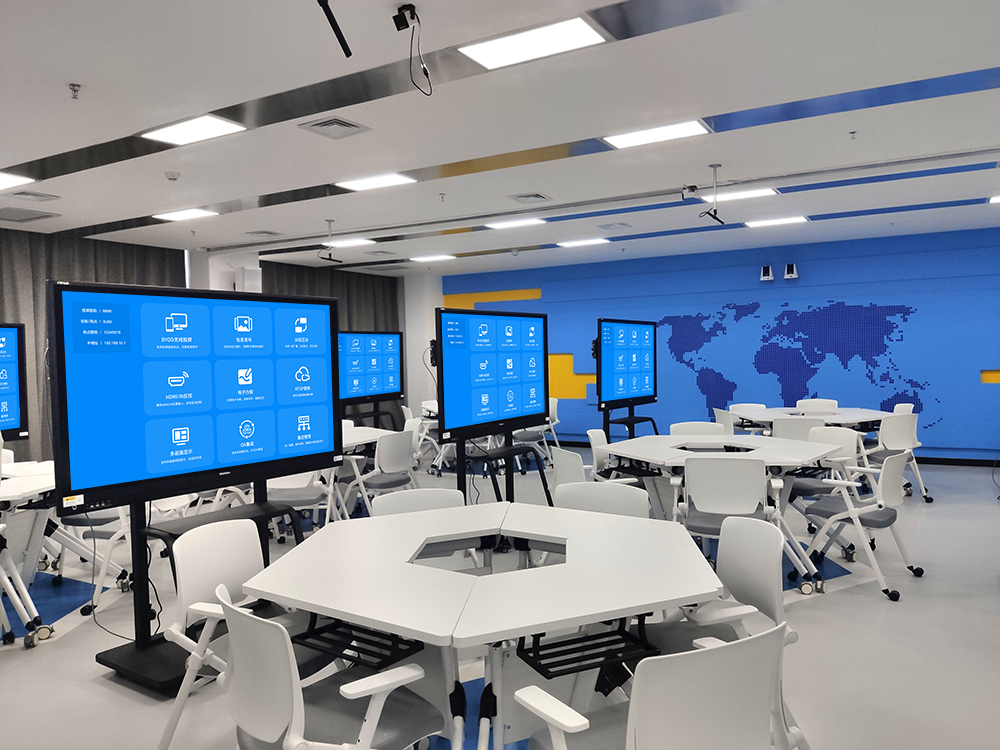Multi-Screen Collaboration: Breaking Device Barriers, Unleashing Collaborative Creativity
In today’s fast-paced information age, a single screen often falls short of complex collaboration needs. Multi-screen collaboration, through technological innovation, allows devices like phones, computers, tablets, and large displays to break free from system and spatial limitations, forming an interconnected smart network. This enables real-time content flow and seamless operation, injecting new momentum for efficient collaboration in offices, education, creative work, and more.
I. All-Protocol Wireless Connectivity: Zero Barrier Device Interconnection
The core of multi-screen collaboration is to break down “language barriers” between devices, allowing different types of terminals to connect without discrimination:
Cross-System Full Compatibility: It supports mainstream protocols like AirPlay, Miracast, WiDi, Google Cast, and Huawei Cast+, covering all operating systems including iOS, Android, Windows, and macOS. Whether it’s a designer’s MacBook, an engineer’s Windows laptop, or a student’s Android tablet, all can join the collaborative network via wireless screen mirroring, preventing information silos caused by device differences.
Flexible Switching of Multi-Mode Connections: You can choose between “one-to-one mirroring” (phone to large screen), “one-to-many distribution” (computer content synced to multiple group screens), or “many-to-one consolidation” (multiple device content displayed centrally) depending on the scenario. For example, in a corporate seminar, the main presenter can project the core proposal from their computer, while attendees project supplementary data from their phones. The main screen integrates all content in real-time, making discussions more focused.
Ultra-Fast Connection Experience: Devices can be paired within 3 seconds using methods like a 6-digit casting code, NFC tap, or QR code scanning, without needing to install drivers or specialized software. Even temporary guests can connect quickly; for instance, a client can scan a QR code with their phone to project their requirements, eliminating the need for pre-configuration and boosting collaboration initiation efficiency by 80%.
II. Two-Way Interactive Operation: From “Content Display” to “Deep Co-creation”
Multi-screen collaboration is far more than simple screen replication. Through two-way control, it turns every screen into an “interaction node,” deepening collaboration:
Cross-Screen Reverse Control: The large screen can not only receive content but also directly control the mirrored device. In a meeting, you can use the large touch screen to flip through PPT slides on a computer or annotate documents from a phone, eliminating the need for the presenter to switch back and forth between devices. This makes explanations seamless. During design reviews, clients can circle modification points on the large screen, with operations syncing to the designer’s computer for more efficient real-time adjustments.
Real-Time Annotation and Multi-Person Collaboration: Once content is mirrored, other terminals can annotate it (with text, lines, shapes), and these annotations sync in real-time to all screens. For example, in a teaching scenario, a teacher projects courseware from a computer, students use tablets to mark questions, and all annotations are displayed in real-time on the main screen, transforming classroom interaction from “passive listening” to “active participation.”
Content Drag-and-Drop and Integration: It supports dragging and combining content like spreadsheets from Device A, images from Device B, and videos from Device C onto a single screen for display. When the marketing department discusses quarterly plans, they can simultaneously compare user feedback from phones, sales data from computers, and competitor analysis from tablets. This intuitive presentation of multi-dimensional information accelerates the decision-making process.
III. Seamless Data Flow: Building a Closed Loop for Full Collaboration Workflow
Multi-screen collaboration maximizes value by preserving and reusing data, ensuring collaborative outcomes aren’t lost:
Real-Time Content Storage and Categorization: Mirrored content and annotation records from collaboration sessions are automatically saved to the cloud, categorized by “project / time / participants.” After a meeting, the system automatically generates annotated meeting minutes that participants can download directly. After class, students can review courseware with teacher annotations, making their revision more targeted.
Cross-Device File Transfer: It supports direct drag-and-drop file transfer between connected devices, eliminating the need for USB drives or email. A designer can drag a design draft from their computer to a client’s phone for on-site confirmation, and then the client can drag a document with modification suggestions back to the designer’s computer. This boosts file transfer efficiency by 90% and prevents version confusion.
Multi-Scenario Data Linkage: Deeply integrated with office software and teaching systems. In enterprise settings, multi-screen collaboration content can be synced to DingTalk or Feishu documents with one click. In educational settings, classroom interaction data automatically syncs to the teaching platform, generating student engagement reports that provide a basis for personalized teaching.

IV. Stable and Reliable: Adapting to Complex Collaboration Needs in Challenging Environments
Multi-screen collaboration maintains highly efficient operation even in complex scenarios, with its stability proven in real-world use:
Anti-Interference Transmission Technology: It uses dual-band Wi-Fi (2.4G/5G) and intelligent channel switching technology. In environments with many simultaneous connections and network congestion (e.g., a 30-person meeting room, a 60-person classroom), it maintains low latency (≤100ms), preventing lag and disconnections.
Adaptive Adjustment to Weak Networks: When network fluctuations occur, it automatically reduces resolution to ensure smoothness, quickly switching back to high-definition mode once the network recovers. In remote collaboration, even if some participants have unstable networks, basic content synchronization is maintained, ensuring uninterrupted collaboration.
Real-Time Device Status Monitoring: Administrators can view the number of connected devices, transmission frame rates, and network status for each screen via the backend. This allows for timely intervention if anomalies are detected (e.g., a device consuming excessive bandwidth), reducing the risk of collaboration interruptions due to technical issues.
V. Multi-Scenario Adaptation: Making Collaboration Ubiquitous
The value of multi-screen collaboration lies in its deep integration into different scenarios, addressing real pain points:
Office Collaboration: In meeting rooms, multi-screen linkage for presenting proposals, real-time annotation and modification, and rapid file transfer boost meeting efficiency by 50%. For remote work, mirroring a computer to a large home screen and using a phone as a control device creates an immersive “small screen operation, large screen display” office experience.
Education and Teaching: The teacher’s main screen connects with student tablets and group screens. Courseware can be distributed with one click, student answers are given real-time feedback, and group discussion results are projected for display. Classroom interaction participation rates increase from 60% to 95%, and knowledge absorption efficiency improves significantly.
Creative Work: In a design team, designers project their initial drafts from computers, planners add ideas from tablets, and clients annotate changes on phones. Multi-terminal collaboration shortens the creative cycle from inception to completion by 40%, avoiding efficiency loss from repetitive communication.
Multi-screen collaboration breaks device barriers with all-protocol connectivity, deepens collaboration through two-way interaction, builds a closed loop with data flow, and ensures implementation with stable performance. It is not just a technological integration but a revolution in collaboration models, making information transfer more efficient, creative brainstorming more direct, and team coordination more seamless, becoming a core tool for boosting collaboration in the digital age.